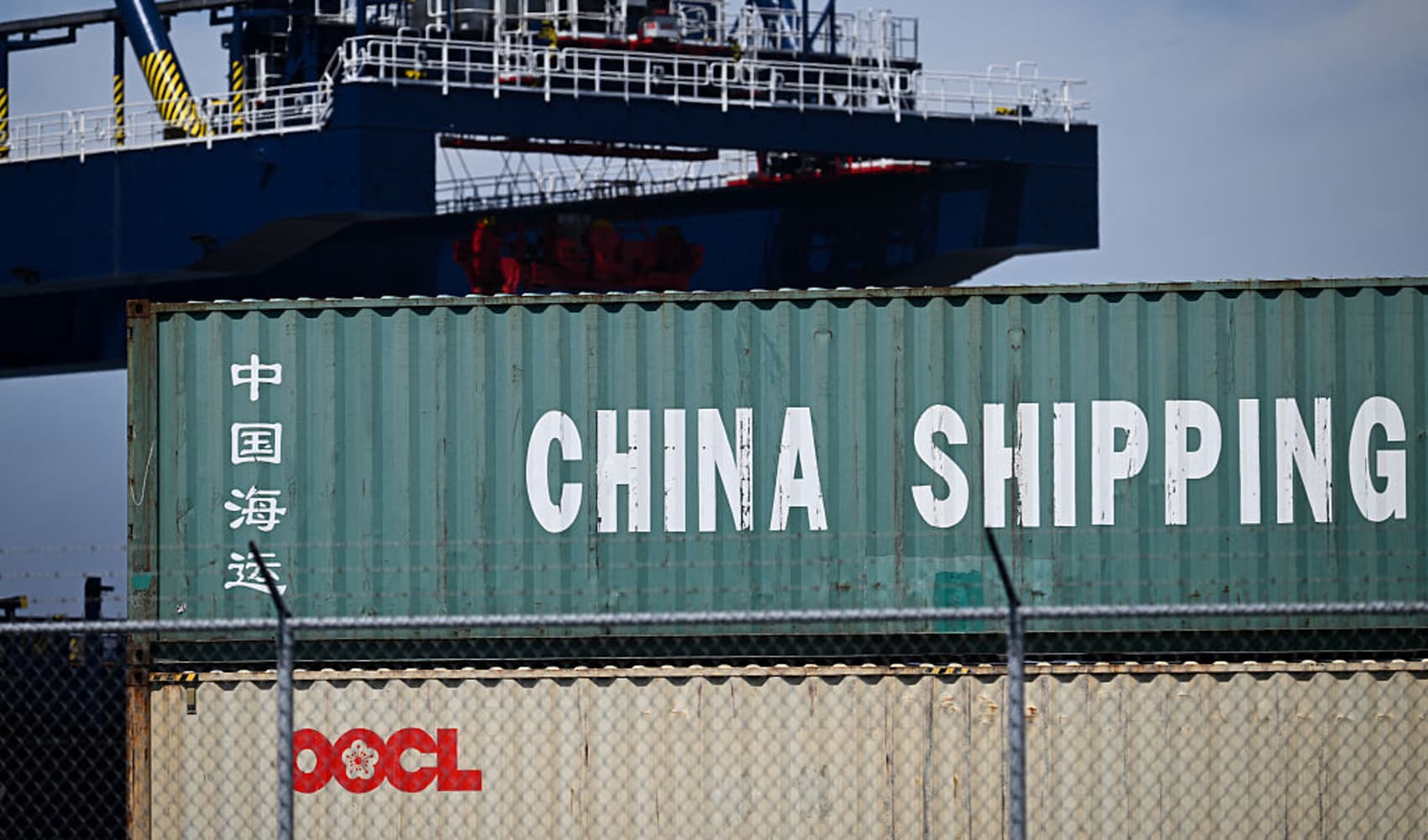US Tariffs Bite: Chinese Factories Pivot to Survive
US Tariffs Bite: Chinese Factories Halt Production, Seek New Horizons
The Winds of Change: An Introduction
Imagine a bustling factory floor, the hum of machinery a constant backdrop to the lives of hundreds of workers. Now picture that same space, eerily silent, the machines gathering dust. This isn't a scene from a dystopian novel; it's a reality unfolding in parts of China as U.S. tariffs begin to take their toll. Chinese manufacturers are facing a challenging new landscape, one where pausing production and exploring uncharted territories are becoming increasingly necessary. But what exactly is happening, and what does it mean for the future of global trade?
The Tariff Tsunami: How US Policies Impact Chinese Factories
The U.S.-China trade war, a saga of escalating tariffs and retaliatory measures, has sent ripples across the global economy. For Chinese factories that heavily relied on exports to the U.S., these tariffs have been a heavy blow. It's like trying to swim against a strong current – the more you struggle, the more difficult it becomes.
The Domino Effect: Production Pauses and Job Losses
As orders from the U.S. dwindle due to increased costs, factories are left with a difficult choice: reduce production or accumulate unsold inventory. Many are opting for the former, leading to temporary or even permanent shutdowns. As Cameron Johnson, Shanghai-based senior partner at Tidalwave Solutions, puts it, "I know several factories that have told half of their employees to go home for a few weeks and stopped most of their production." This, of course, leads to job losses, affecting families and communities that depend on these industries. It's a painful cycle of economic disruption.
The Search for New Markets: Diversification as a Survival Strategy
When one door closes, another opens, right? That's the mantra many Chinese manufacturers are adopting as they actively seek new markets beyond the U.S. Diversification is no longer just a business strategy; it's a matter of survival.
Southeast Asia: A Promising Alternative
Countries like Vietnam, Thailand, and Indonesia are emerging as attractive alternatives for Chinese exporters. These nations offer lower labor costs and a growing consumer base, making them ideal destinations for manufacturers looking to diversify their market presence. Think of it as planting seeds in new soil, hoping for a bountiful harvest.
The Belt and Road Initiative: Expanding Horizons
China's Belt and Road Initiative (BRI), a massive infrastructure project spanning Asia, Africa, and Europe, is also playing a crucial role in facilitating trade with new markets. The BRI provides the infrastructure and connectivity needed to transport goods to and from these regions, opening up new opportunities for Chinese manufacturers. It’s like building a highway to new economic opportunities.
Livestreaming to the Rescue: Adapting to the Digital Age
In the face of declining export orders, some Chinese companies are turning to innovative strategies to boost domestic sales. One such strategy is livestreaming, a form of online selling where hosts demonstrate products and interact with potential customers in real-time. This approach allows manufacturers to bypass traditional retail channels and connect directly with consumers. It's like bringing the factory floor directly to people's living rooms.
The Power of Social Commerce: Engaging with Consumers
Livestreaming often leverages the power of social media platforms like TikTok and WeChat, enabling companies to reach a vast audience of potential buyers. By creating engaging content and offering exclusive deals, manufacturers can build brand loyalty and drive sales. The rise of social commerce, where online shopping is integrated with social networking, is a game-changer for Chinese businesses.
The Impact on Different Industries: Who's Feeling the Heat?
Not all industries are affected equally by the U.S. tariffs. Some sectors are more vulnerable than others, depending on their reliance on the U.S. market and the availability of alternative markets.
Toys, Sporting Goods, and Dollar Store Items: The Hardest Hit
According to Cameron Johnson, factories producing toys, sporting goods, and low-cost Dollar Store-type items are among the hardest hit. These products often have low profit margins, making them particularly sensitive to tariff increases. It’s like trying to balance on a tightrope during a storm – any slight disturbance can throw you off balance.
High-Tech Manufacturing: A More Resilient Sector?
While high-tech manufacturing is also affected by the trade war, it may be more resilient due to the strategic importance of these industries and the potential for government support. However, even these sectors are facing challenges in terms of supply chain disruptions and increased costs.
Building Businesses on New Trade Routes: Pioneers of Adaptation
Some companies have already anticipated the shift in global trade patterns and have proactively built businesses on alternative trade routes. These pioneers are paving the way for others to follow, demonstrating the potential for growth and profitability in new markets.
The Importance of Early Adoption: Gaining a Competitive Edge
By investing in new markets and developing strong relationships with local partners, these companies are gaining a competitive edge over their rivals. Early adoption allows them to establish a foothold in these regions and build a reputation for quality and reliability. It’s like being the first to stake a claim in a gold rush – you get the best pick of the land.
The Long-Term Implications: A Shifting Global Landscape
The U.S.-China trade war is not just a temporary dispute; it's a symptom of a larger shift in the global economic landscape. As China's economy continues to grow and its influence expands, it's likely that we'll see more trade disputes and geopolitical tensions in the years to come. It's a new world order, and we all need to adapt.
The Rise of Regional Trade Agreements: A More Fragmented World?
The trade war may also accelerate the trend towards regional trade agreements, as countries seek to reduce their reliance on global supply chains. This could lead to a more fragmented world, with different trading blocs and competing standards. It’s like different tribes forming, each with its own set of rules.
Government Support: A Lifeline for Struggling Businesses
The Chinese government is aware of the challenges facing its manufacturers and is taking steps to provide support. This includes offering tax breaks, subsidies, and other forms of assistance to help businesses weather the storm.
Policy Measures: A Mixed Bag of Results
While these policy measures can provide some relief, they may not be enough to fully offset the impact of the tariffs. Moreover, some critics argue that government support can create unfair competition and distort market prices. It’s a balancing act, trying to support businesses without creating unintended consequences.
The Future of Manufacturing in China: A Crossroads
The U.S. tariffs have brought Chinese manufacturing to a crossroads. The old model of relying heavily on exports to the U.S. is no longer sustainable. Chinese manufacturers need to innovate, diversify, and adapt to the changing global landscape to ensure their long-term survival.
Innovation and Automation: The Keys to Competitiveness
Investing in research and development, embracing automation, and improving product quality are essential for Chinese manufacturers to remain competitive in the global market. It's like upgrading from a horse-drawn carriage to a high-speed train – you need to embrace new technologies to stay ahead.
The Consumer Perspective: What Does This Mean for Shoppers?
The U.S.-China trade war affects not just manufacturers but also consumers around the world. Tariffs can lead to higher prices for imported goods, reducing purchasing power and potentially impacting overall economic growth.
Inflation and Price Increases: The Hidden Costs
While some companies may absorb the cost of tariffs, others will pass them on to consumers in the form of higher prices. This can lead to inflation and reduce the affordability of everyday items. It's like a hidden tax that everyone pays.
Navigating the Uncertainty: A Call for Strategic Planning
In this uncertain environment, businesses need to be proactive and develop robust strategic plans to mitigate the risks and capitalize on the opportunities. This includes assessing their exposure to tariffs, exploring new markets, and investing in innovation. It's like charting a course through stormy seas – you need a clear plan and a steady hand.
Collaboration and Partnerships: Strength in Numbers
Forming strategic alliances and partnerships can also help businesses navigate the challenges of the trade war. By pooling resources and sharing expertise, companies can become more resilient and better positioned to compete in the global market. It’s like a flock of birds flying together – they can weather the storm more effectively.
Conclusion: Adapting to the New Normal
The U.S. tariffs have undoubtedly created significant challenges for Chinese manufacturers, forcing them to pause production, seek new markets, and adapt to a rapidly changing global landscape. While the immediate impact is painful, this crisis also presents an opportunity for innovation, diversification, and long-term growth. The key takeaway is that resilience and adaptability are paramount in navigating the uncertainties of the new global economy. The future belongs to those who can embrace change and seize new opportunities.
Frequently Asked Questions
What are the main reasons Chinese factories are halting production?
The primary reason is the impact of U.S. tariffs, which have led to reduced orders from the U.S., making production unprofitable for some factories.
Which industries are most affected by the U.S. tariffs on Chinese goods?
Industries producing toys, sporting goods, and low-cost Dollar Store-type items are among the most affected due to their low profit margins.
What alternative markets are Chinese manufacturers exploring?
Southeast Asian countries like Vietnam, Thailand, and Indonesia are becoming attractive alternatives. They are also exploring opportunities within China's Belt and Road Initiative.
How are Chinese companies using livestreaming to combat lost export sales?
Livestreaming allows manufacturers to connect directly with consumers, showcase their products, and drive domestic sales, bypassing traditional retail channels.
What long-term impacts might the U.S.-China trade war have on the global economy?
It could lead to increased inflation, the rise of regional trade agreements, and a more fragmented global trading system, ultimately affecting consumer prices and global supply chains.

